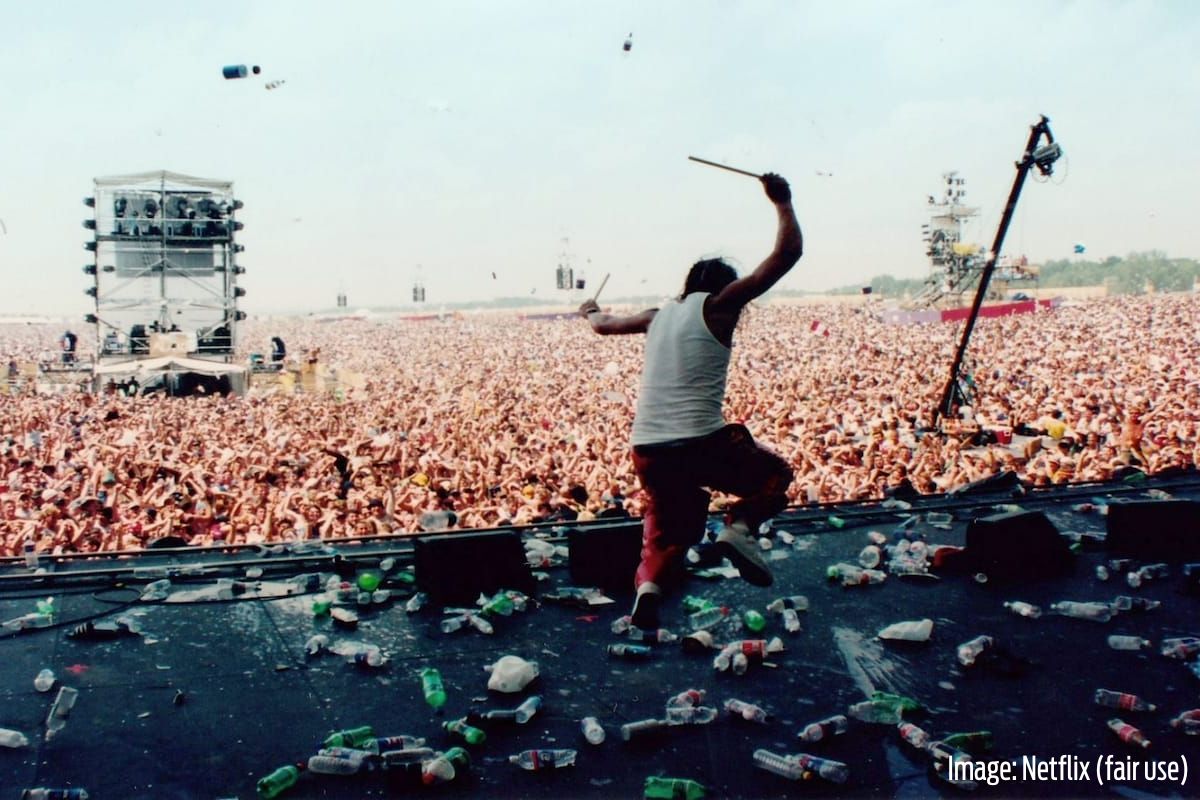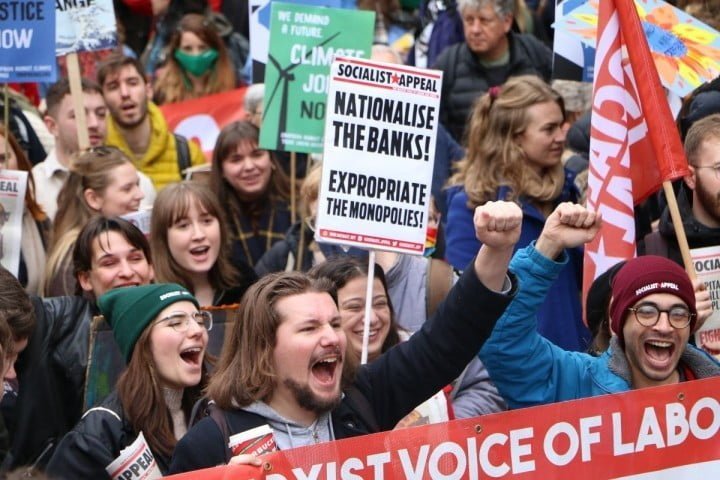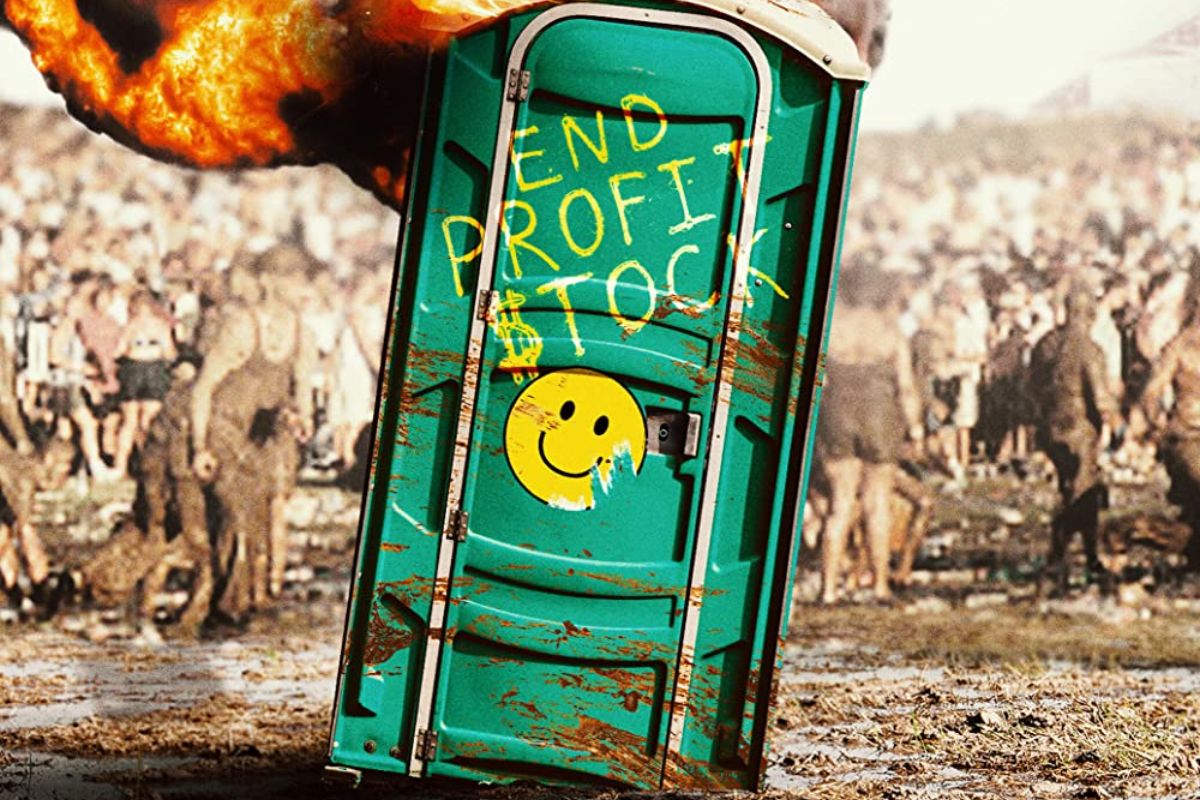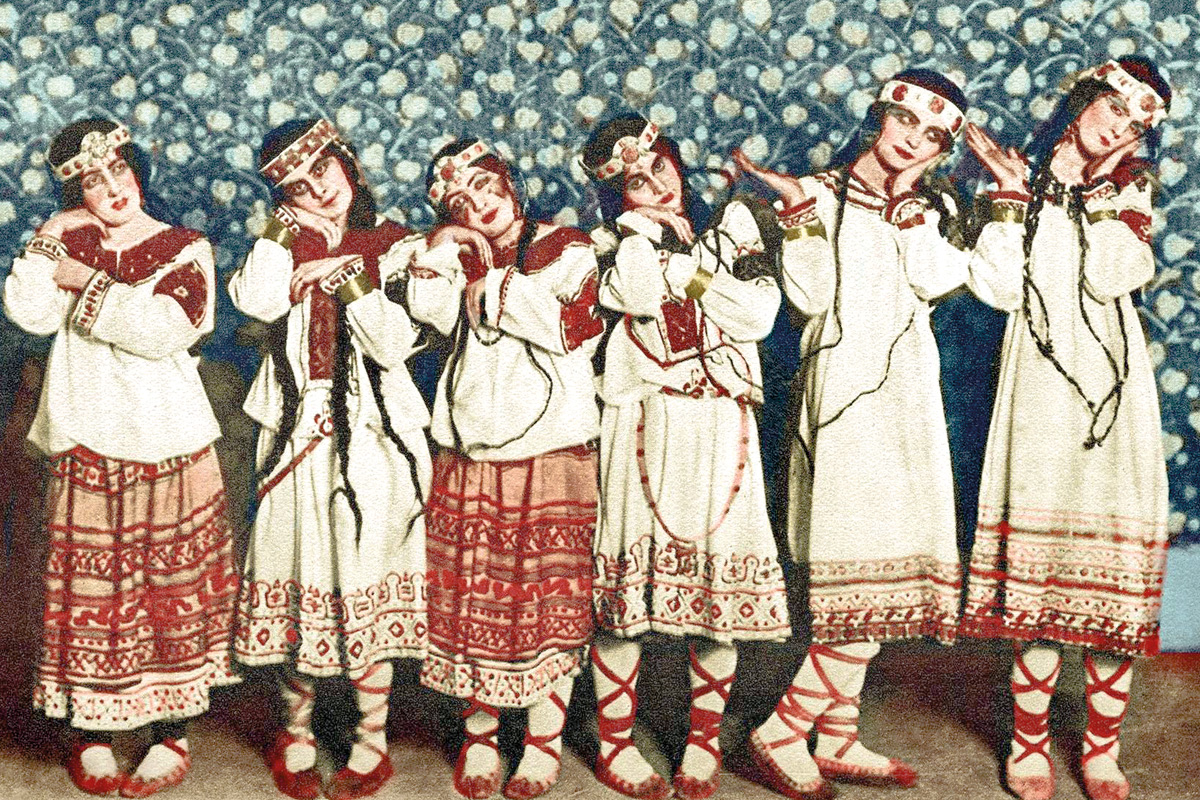New Netflix documentary ‘Trainwreck: Woodstock ‘99’ shows how cost-cutting by profiteering organisers created a carnival of chaos, provoking a backlash from festival-goers. Likewise, capitalist conditions are fomenting social explosions today.
The three-part Netflix documentary Trainwreck: Woodstock ‘99 revisits the chaotic events that blighted the 30th anniversary of the famous original Woodstock festival in 1969.
The 1999 festival was billed as “this is not your parents’ Woodstock”. It absolutely wasn’t – but not for the reasons the organisers may have anticipated.
Instead of the ‘peace and love’ spirit of ‘69, there was Mad Max-esque destruction and rioting at Woodstock ‘99.
This was a direct consequence of the intense capitalist exploitation that young people experience both inside and outside of the festival.
Rampant profiteering
Woodstock ‘69 and ‘99 are not easily comparable. Their differences can’t merely be explained away by generational differences. After all, thousands of festivals in the 1990s didn’t end in absolute chaos like Woodstock ‘99.
Music and festivals are not only a form of entertainment and a means of enjoyment. They can also play a role in alleviating and channelling teenagers’ feelings of frustration, anger, and loneliness.
And with the promise of a chance to briefly escape the daily pressures of life under capitalism, young people flocked to attend this festival.
The documentary traces the events over the three days of the festival. In doing so, it becomes clear that outsourcing, cost-cutting, and profiteering led to huge problems within the festival. Rather than distracting from capitalism’s pressures, these were enormously amplified for the young people attending.
Temperatures soared to nearly 40°C degrees. And with no means of staying cool available, the extortionate price of a bottle of water immediately angered festival-goers. Price gouging from all the food and drink vendors only added to the restless mood.
Cost-cutting led to poor sanitary conditions, which caused thousands of people to get extremely ill, contracting infections such as ‘trench mouth’. Without sufficient workers or volunteers to pick up litter and empty bins, the site quickly became an enormous rubbish dump.
The meagre medical facilities that did exist were increasingly stretched to their limits, as festival attendees quickly became ill and dehydrated.
All of these failures together contributed to around 100,000 people leaving the festival early.
Explosive conditions

Some of those who endured these poor conditions began to take their frustrations out on the performing bands, pelting the acts with bottles. Such was the hostility from the crowd that some artists were forced to flee the stage – and the whole festival – in search of safety.
According to the documentary, the anger and tension that had been building up over the first couple of days reached a tipping point with the performance of Limp Bizkit. Their song ‘Break Stuff’ connected with a layer of the exasperated crowd, who began to literally tear down the festival’s infrastructure.
Once again, in order to cut costs, the vast majority of the security operation was given over to festival-goers who were primarily looking to enjoy themselves. The majority of the abusive and violent behaviour that occurred therefore took place without any repercussions.
Sexual harassment and abuse of women tragically exists across the whole of society – a product of the oppression of women within capitalism more widely, which is reinforced and perpetuated by the ruling class.
But the barbaric conditions of the festival provided a breeding ground for the worst elements and incidences of sexism to thrive and fester.
In the macho, angry atmosphere whipped up by the festival organisers, and without proper security, women were left vulnerable to misogynists and abusers.
Footage from the festival shows men holding cardboard placards with the words ‘show us your tits’ written on them. Young girls and women were encouraged to remove their tops, surrounded by cheering young men and TV cameras. In the chaos that unfolded, a number of women were raped.
The documentary highlights how attitudes and behaviour towards women have changed since – pointing to the #MeToo movement as an example.
Misogyny, sexual harassment, and the oppression of women more generally are far from being over. In fact, the documentary actually shows just how little has fundamentally changed for women under capitalism.
By the final night – after all attendees had been given candles by the organisers – the anger of the crowd turned into a riot, and large areas of the site were burned down.
Capitalism to blame

The festival organisers, when interviewed by the documentary, single out Limp Bizkit’s Fred Durst as encouraging and inciting riotous behaviour. At the same time, they try to place the blame on a small minority of ‘troublemakers’ – anyone but themselves.
But the real blame for the catastrophe of Woodstock ‘99 lies solely with the capitalists and their ruthless pursuit of profit.
From start to finish, it is clear that the festival organisers were only interested in organising an event that made as much money as possible, regardless of the consequences.
Wringing young people for the little money they had, whilst treating them with contempt, clearly was responsible for provoking a violent backlash.
This should serve as a warning sign to the ruling class. What happened in microcosm at this disastrous festival could easily be replicated at a larger scale across society in the period ahead.
Just as the conditions at Woodstock ‘99 inevitably led to a mass outpouring of anger, the deepening crisis of capitalism today is preparing the conditions for social explosions in one country after another.






